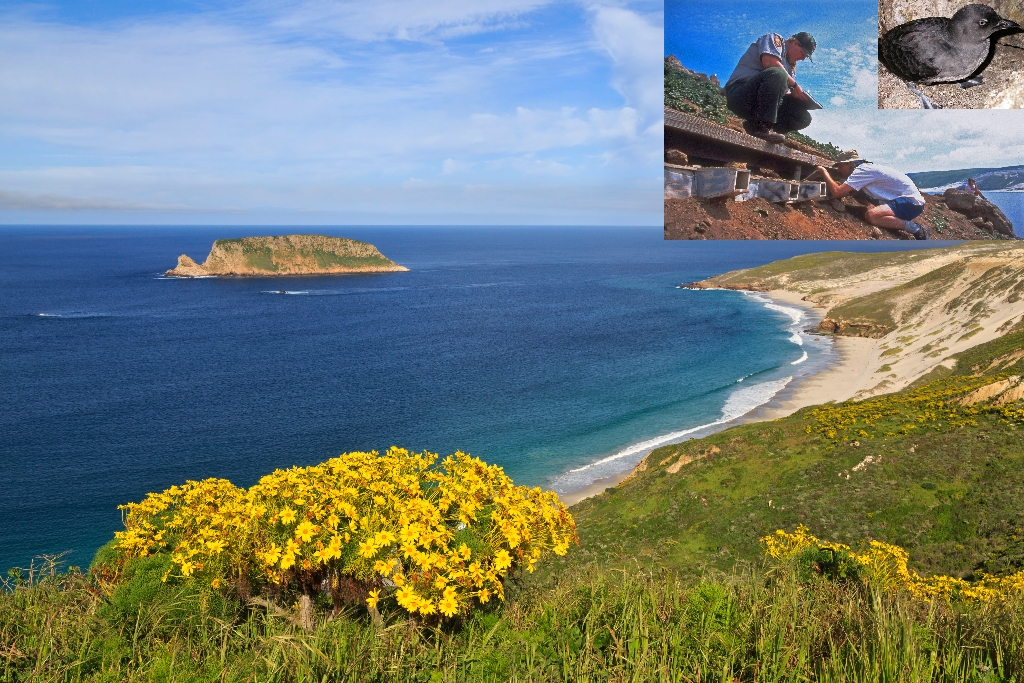
An Ideal Isolated Home
The ever-present western gulls and graceful pelicans can often be sighted soaring throughout the island, especially along the steep, rugged volcanic cliffs. These cliffs, their numerous caves, and the rest of San Miguel Island's coastline and neighboring islets are home to 13 different species of nesting seabirds and shorebirds. Prince Island, which lies at the entrance to Cuyler Harbor, hosts the most diverse seabird colony on the west coast with all 13 of these species. Ashy storm-petrels, Brandt's cormorants, Cassin's auklets, pigeon guillemots, California brown pelicans, and common murres all make their home here.
San Miguel Island, the other Channel Islands, and all of their associated islets and offshore rocks comprise one of the largest breeding centers on the west coast for seabirds and shorebirds. Their isolation and freedom from predators and human disturbance, as well as the abundance of food in the cold, nutrient-rich ocean waters surrounding them, make them an ideal place for marine birds to breed and rear their young.
However, the island's isolation was not able to protect some species of seabirds from human impacts. The destruction of native vegetation, importing of non-native species, gathering of eggs, disturbance of rookeries, and the spread of pesticides in the marine environment have all been detrimental.
During the 1960s, the pesticide DDT nearly caused the extinction of the California brown pelican as a breeding species on the west coast of the United States. In 1970, only 552 nesting attempts were made on Anacapa Island (the largest colony on the West coast of the United States) and just one chick survived. On October 13, 1970, the brown pelican was listed as an endangered species.
Cassin's auklets were once so abundant on San Miguel Island that in 1863 it was recorded that "they had undermined almost every part of the soft, earthy surface with their burrows." Between 1897 and 1908, cats were introduced to the island, and by 1911, it was reported that the breeding colony had been entirely abandoned. To make matters even worse, the cats devastated the island's large Scripps's murrelet colony as well-biologists found only one egg.
Today, these species are gradually recovering now that their isolated island home is protected within Channel Islands National Park. Through monitoring and restoration programs, the park and its partners are working to conserve critical nesting habitat and to protect the integrity of the island and marine ecosystems that support 90 percent of southern California's seabird populations.
On San Miguel Island, these efforts have focused on restoring seabird nesting habitat, removing feral cats and non-native vegetation, revegetating with native plants, installing nest boxes, and closing areas to protect nesting seabirds.
The most notable results of these efforts have been the successful recovery of the California brown pelican and its removal from the endangered species list in 2009, and San Miguel Island once more supporting the largest number of breeding seabirds on any of the Channel Islands.
Is there something we missed for this itinerary?
Itineraries across USA


















































